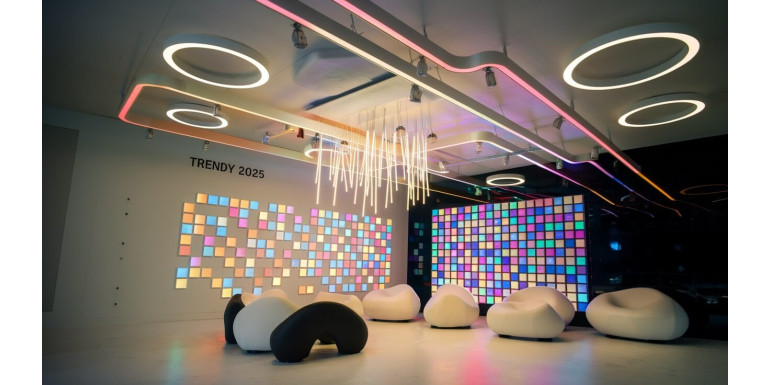LED lights have completely changed the way we illuminate our homes. Their energy efficiency, long lifespan, and superior brightness have made them popular among homeowners.
Over the years, LED technology has evolved rapidly, and today, it offers more than just illumination—it enhances the mood, improves energy efficiency, and adds a modern touch to home interiors.
The future of LED lighting for homes promises more exciting trends and innovations that will redefine how we use lighting in our daily lives.
Why LED Lights Are the Preferred Choice
LED lights have gained massive popularity due to their ability to provide bright illumination while consuming significantly less power than traditional incandescent or CFL bulbs. Their long lifespan means fewer replacements, reducing overall maintenance costs.
Moreover, LED lights produce minimal heat, making them safer and more energy-efficient. For Indian households, where electricity consumption is a major concern, switching to LED lights has helped many homeowners reduce their power bills. LEDs convert almost 90% of their energy into light.
Another reason why LED lights have become so popular is their versatility. They are available in various shapes, sizes, and colour temperatures, allowing homeowners to customise the lighting according to their preferences. From warm yellow hues for a cosy feel to bright white lights for task-focused areas, LED lights offer endless possibilities.
Emerging Trends in LED Lighting
The future of LED lighting for homes is moving beyond basic illumination. Modern advancements are focused on improving efficiency, personalisation, and integration with smart home systems.
1. Smart Lighting Integration
Smart home technology is becoming integral to modern living, and LED lights are no exception. Smart LED lights can now be controlled using smartphones, voice assistants, and home automation systems. This allows homeowners to adjust brightness levels, change colours, and even create custom lighting schedules from the comfort of their couches.
2. Human-Centric Lighting
One of the most exciting trends in LED lighting is human-centric lighting, which is designed to align with the body’s natural circadian rhythm. Exposure to certain types of light at specific times of the day can affect mood, sleep quality, and overall health.
Human-centric LED lights can adjust their colour temperature and brightness throughout the day to mimic natural light patterns. They can emit bright, cool-toned light in the morning to promote wakefulness and alertness.
3. Colour-Tunable LEDs
Traditional LED lights offered limited colour options, but advancements in colour-tunable technology are changing that. Colour-tunable LEDs allow you to adjust the hue and saturation of the light according to your mood or activity.
4. Sustainable and Eco-Friendly Designs
As environmental awareness grows, LED manufacturers are focusing on sustainability. Future LED lights will be designed with recyclable materials and more energy-efficient components to reduce environmental impact. Some models are even being developed to work with solar power.
5. Decorative and Architectural Lighting
LED lights are no longer limited to basic ceiling fixtures and lamps. Modern designs now incorporate LED technology into decorative and architectural elements. Recessed lighting, strip lights, and under-cabinet lighting are becoming popular for enhancing the look and feel of interior spaces.
6. Improved Efficiency and Longevity
LED lights are already known for their long lifespan, but future models are expected to last even longer with improved efficiency. Innovations in LED chip technology are increasing brightness while reducing power consumption. That means the next generation of LED lights will produce more light while consuming less energy.
How to Choose the Right LED Lights for Your Home
With plenty of options, selecting the right LED lights for your home can seem stressful. Begin by considering the purpose of each light. Bright white LEDs with high lumen output are ideal for task lighting, such as in the kitchen or study. Warmer tones create a more relaxed and inviting atmosphere for living rooms and bedrooms.
Smart lighting options provide greater flexibility and control, allowing you to adjust the lighting according to your mood and routine. If you prefer a hands-free experience, look for LED lights that are compatible with voice assistants or smart home systems.
Energy efficiency should also be a key consideration. LED lights with higher lumens per watt produce more light while consuming less energy, helping you save on electricity bills. Check for certification marks that confirm the lights meet safety and efficiency standards.
Installation and maintenance are equally important. Some LED lights are designed for easy plug-and-play installation, while others may require professional fitting. Go for models with replaceable components to reduce waste and extend the lifespan of the fixture.
Final Thoughts
The future of LED lighting for homes is bright—literally and figuratively. With advancements in smart technology, colour tuning, human-centric design, and sustainability, LED lights are set to become even more efficient and versatile in 2025 and beyond.
Investing in high-quality LED lights enhances your home’s aesthetics and contributes to long-term cost savings and environmental responsibility. The next generation of LED lighting promises to combine functionality, style, and innovation, making your home more comfortable and visually appealing than ever before.

